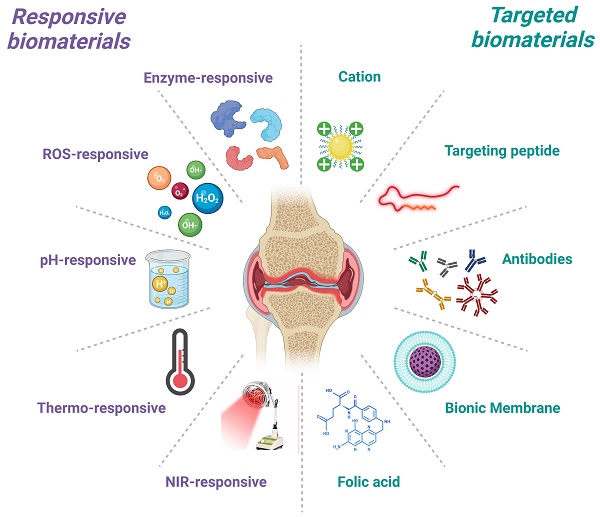
Groundbreaking 10-Minute Test Swiftly Distinguishes Between Osteoarthritis and Rheumatoid Arthritis
In a remarkable advancement for arthritis diagnostics, researchers in South Korea have introduced a state-of-the-art diagnostic platform that can differentiate between osteoarthritis (OA) and rheumatoid arthritis (RA) in just 10 minutes — utilizing only a tiny sample of joint fluid. This breakthrough has the potential to transform how these debilitating joint conditions are diagnosed and treated, paving the way for earlier interventions and enhanced patient outcomes.
This innovative technology, developed by Dr. Ho Sang Jung and his colleagues at the Korea Institute of Materials Science (KIMS) in partnership with Seoul St. Mary’s Hospital, employs sea urchin-shaped gold nanoparticles integrated on a paper-based sensor. By examining metabolites in synovial fluid using a cutting-edge technique known as Surface-Enhanced Raman Scattering (SERS), the platform provides quick and highly precise results while being cost-effective and easy to implement.
“If this technology reaches commercialization, it will not only support diagnosis but also be invaluable in tracking treatment efficacy,” stated Dr. Jung. “We also intend to broaden our research to encompass a wider array of diseases moving forward.”
A Response to an Urgent Need
The innovation arrives at a pivotal moment: Studies indicate that over 50% of people aged 65 and older suffer from osteoarthritis symptoms, while rheumatoid arthritis affects approximately 1 in 100 individuals throughout their lives. Although both types of arthritis can produce similar symptoms, including joint pain and swelling, they arise from different causes and necessitate fundamentally different treatment regimens. Therefore, accurate and prompt diagnosis is essential for starting the right therapy and preventing long-term harm.
Existing diagnostic strategies — comprising X-rays, MRIs, and blood tests — are often protracted, expensive, and may lack the sensitivity to detect early-stage disease. Delays in diagnosing can lead to considerable joint damage, a decreased quality of life, and elevated healthcare expenses.
Nanotechnology Meets Machine Learning
The South Korean researchers’ platform harnesses the capabilities of nanotechnology and machine learning to tackle these challenges. The highly absorbent paper-based sensor, coated with distinctive spiky gold nanoparticles, collects minute amounts of joint fluid. The SERS technique enhances the optical signals from the minuscule molecules in the sample by several million times, allowing the detection of subtle metabolic variations that characterize OA and RA.
In trials involving 120 patients at Seoul St. Mary’s Hospital, the platform achieved an impressive accuracy rate of over 94% in distinguishing between osteoarthritis and rheumatoid arthritis. Remarkably, it also showed over 95% accuracy in assessing the severity of RA by correlating metabolite fluctuations with white blood cell counts.
Key Metabolic Markers
Through this methodology, the researchers identified a set of crucial metabolites that assist in differentiating the two conditions. Elevated levels of acetylspermine and adonitol were noted in samples from osteoarthritis patients, while mannitol and particular glucose compounds were more prevalent in rheumatoid arthritis patients.
These findings not only enhance diagnostic precision but also provide a potential insight into understanding the metabolic pathways that underlie arthritis, which could inform future treatment approaches.
A Leap Toward Accessible, Point-of-Care Diagnostics
In addition to its diagnostic capabilities, this innovation offers significant benefits in terms of accessibility and convenience. Conventional arthritis diagnoses often entail numerous medical appointments and extensive testing over several weeks or months — a process that can be particularly taxing for elderly or mobility-impaired patients.
By streamlining the diagnostic procedure to a single, 10-minute test, clinical decision-making could be vastly expedited. Consequently, patients could access earlier treatment, potentially slowing disease progression and improving health outcomes.
Moreover, the paper-based sensor platform is affordable to manufacture and does not necessitate advanced equipment, making it ideally suited for point-of-care deployment in clinics, community health centers, and rural hospitals around the globe.
Toward a Broader Future
As the prevalence of arthritis escalates worldwide alongside aging populations, medical advancements like this diagnostic platform could serve as an indispensable resource in managing the expanding burden of joint diseases. Beyond arthritis diagnostics, Dr. Jung’s team is also investigating ways to extend the platform’s utility to other inflammatory and degenerative conditions with unmet diagnostic requirements.
The research received support from South Korea’s National Research Foundation and the Ministry of Trade, Industry and Energy. The team’s findings were published online on March 30 and will appear in the April 2025 edition of Small, a prominent scientific journal dedicated to nanomaterials and nanotechnology.
As efforts toward commercialization commence, this gold nanoparticle-based platform is set to provide rapid, precise, and accessible arthritis diagnostics — revolutionizing patient care and laying the groundwork for a new era of personalized medicine in rheumatology.